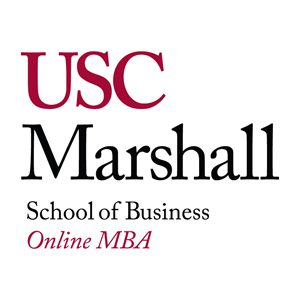Cornell Study Reveals Curious Fashion Findings, and More – New York News

Let’s explore some of the most interesting stories that have emerged from New York business schools this week, including curious new findings from a recent Cornell study.
How Disclosing Sponsored Content Affects Consumer Trust in Bloggers – Johnson Business Feed
Cornell University SC Johnson Graduate School of Management Assistant Professor of Management and Organizations Sunita Sah, along with Georgetown’s Prashant Malaviya and Debora Thompson, recently co-authored new research that examines how “consumers react to disclosures of sponsorship from fashion bloggers.”
In a recent release from the Johnson Business Feed, professor Sah writes, “In contrast to much of the previous research on conflict of interest disclosures, we found that in the context-rich setting of online blogs, conflict of interest disclosures have the unanticipated consequence of increasing, rather than decreasing, consumer trust in the blogger and their expertise.”
Sah explains how the blogosphere could more effectively handle disclosures:
“If the purpose is to protect consumers by assuming they will make the necessary adjustments to the advice they receive, it’s crucial that we consider the impact of processing by readers and thoroughly understand any unintended consequences that may occur. We may just have to think harder for solutions other than disclosure to manage conflicts of interest.”
You can find more about the Cornell study here.
Round-the-Clock Work Emails Impact Health, Relationships – Lehigh College of Business and Economics Blog
New research co-authored by Lehigh University College of Business and Economics Associate Professor of Management Liuba Belkin, Virginia Tech’s William Becker, Colorado State’s Samantha A. Conroy, and Virginia Tech doctoral student Sarah Tuskey finds that “personal relationships and home life suffer for those tied to their work emails round-the-clock.”

Liuba Belkin, Ph.D., Lehigh Associate Professor of Management
According to the Lehigh College of Business and Economics Blog, the study is the first to “test the relationship between organizational expectations to monitor work-related electronic communication during non-work hours and the health and relationship satisfaction of employees and their significant others.”
Belkin notes that round-the-clock work emails are “an insidious stressor that not only increase employee anxiety, decrease their relationship satisfaction and have detrimental effects on employee health, but also that they negatively affect partner (significant other) health and marital satisfaction perceptions.”
Belkin recommends that organizations “set off-hour email windows and limit use of electronic communications outside of those windows or set up email schedules when various employees are available to respond.”
The researchers presented “Killing Me Softly: Electronic Communications Monitoring and Employee and Spouse Well-Being” at the Academy of Management annual meeting in Chicago earlier this month and is due for publication in the Academy of Management Best Paper Proceedings.
You can read the full article here.
Professor Applies Principles of Operations Management to New Areas – Rutgers Business News
The Rutgers Business School recently published a profile of Supply Chain Management Department Chair and Associate Professor Lian Qi, whose research “goes beyond the traditional supply chain domain [to explore] new and relevant [topics] related to areas of high impact.”
According to the profile, highlighted in a recent release from Rutgers Business News, Professor Qi’s research “seeks to apply operations management principles and techniques to resolve customer service issues in … healthcare service and the service operations for electric vehicles.”
In the piece, Professor Qi explains why he opted to pursue a career in academia:
“My father is a professor who has inspired my various interests since I was a child. The second reason is that after I worked as a supply chain management consultant at SAP, I wanted to study more theoretical concepts in this area. I also love to work with students. This makes me feel that I can really help many people not just help a department within a company.”
YOu can read the full interview of Qi here.
Rady School Top 15 in 15

Sponsored Content
The Rady School of Management is approaching its 15th anniversary and since its founding in 2003, the school has reached many remarkable milestones. Through the generous support of the business community, the school has grown exponentially—offering new graduate and undergraduate programs, expanding the ranks of its world-renowned faculty, and constructing state-of-the-art facilities where students thrive. Most impressively, the school’s focus on entrepreneurship and innovation has led to numerous companies, founded by Rady School students and alumni, that are changing our world and significantly contributing to our economy. Here’s a look at the top 15 accomplishments the Rady School has achieved in its first 15 years.
- Over 150 operational startup companies have been started by Rady School alumni and students. These startups have revolutionized industries, led to breakthrough medical devices, drastically enhanced the lives of the visually impaired, improved personal wellness monitoring and have forever transformed our world for the better. Many of the startups are a product of the Rady School’s unique Lab to Market core sequence and accelerators.
- The Rady School is grown into an economic powerhouse, with alumni and student startups creating over a $6 billion dollars impact in the local, national and global economy in the last 15 years.
- Founded with the intention to provide quality business education to leaders in innovative industries, the Rady School has launched distinguished graduate programs to serve the needs of the business community, including the school’s flagship Full-Time MBA and FlexMBA programs, which are already recognized among the best.
- In addition to the MBA programs, three specialty graduate programs have been launched: a Master of Finance, a Master of Science in Business Analytics and a Master of Professional Accountancy.
- The school also has three robust undergraduate programs, a business minor, an accounting minor, and a entrepreneurship and innovation minor, all of which are among the most popular minors on the UC San Diego campus.
- Rady School faculty are recognized as leaders for the quality of their research. Over the past 15 years, the school’s faculty have been ranked number one in the U.S. for intellectual capital by Bloomberg Businessweek, 14th globally for faculty research by the Financial Times and 12th globally in student rating of teaching quality by The Economist.
- Since its inception, the school has received strong support from the business community. The school’s many supporters have been generous with their time and with gifts to support the mission of the school. Notable gifts include: a $100 million gift from Ernest and Evelyn Rady to fund strategic priorities and recruit faculty; a $4 million gift and endowed chair from Nobel Laureate and Rady School professor Harry Markowitz and his wife Barbara, a $30 million naming gift from Ernest and Evelyn Rady, and a $5 million gift from Carol and William Stensrud for program development and faculty recruitment.
- The Rady School has established five Centers of Excellence: the California Institute for Innovation and Development (CIID), the Beyster Institute, the Center for Business Analytics, the Center for Social Innovation and Impact, the Institute for Supply Excellence and Innovation the U.S. – Israel Center on Innovation and Economic Sustainability. Each of the school’s centers focuses on a different topic of importance and provides additional learning opportunities and experience for students.
- Launched in 2013, the StartR Accelerator at the Rady School is a non-profit program for Rady School students and alumni designed to provide entrepreneurs the tools needed to start and grow their businesses. The StartR program includes workshops, mentoring, advice and access to other resources for early-stage companies. At the conclusion of the program, teams present their pitches at Demo Day, attended by investors, industry experts and the San Diego community.
- The Rady School’s mystartupXX program is a one-of-its-kind accelerator that was created to increase and encourage diversity in entrepreneurship. Program participants take workshops on launching startups, team building, leadership, market assessment, consumer feedback, creating a value proposition, validating business models, and understanding financing strategies needed to launch the business. Each team works with a mentor and advisors who monitor and encourage their progress.
- The Rady Venture Fund, a student-assisted venture capital investment fund, was established to support the Rady School’s educational objectives in the areas of entrepreneurship, innovation and transfer of discoveries into the marketplace. Students screen investment leads, perform due diligence, make investment recommendations, and monitor portfolio companies. To date, the fund has invested in five early stage companies.
- The Rady School’s Center for Executive Development (CED) offers courses and certificates provide valuable learning experiences that meet the needs of executives and managers in the rapidly changing world of business. Popular CED courses include: leadership, team building, and interpersonal skills. Executive development faculty are industry experts, renowned researchers, engaging teachers and authors.
- The Rady School’s Ph.D. program began in 2009, attracting top doctoral candidates from around the globe. Rady School Ph.D. students have gone on to teach at top school across the U.S. and the globe.
- Two state-of-the-art buildings have been constructed to house the Rady School and provide a modern and technology-forward learning space. Otterson Hall opened in 2007 and Wells Fargo Hall Opened in 2012. Wells Fargo Hall has been LEED Gold certified for its sustainable practices.
- The Rady School earned accreditation from the Association to Advance Collegiate Schools of Business (AACSB International) in 2011. AACSB International is the premier business education accrediting body, with less than five percent of business schools worldwide achieving accreditation.
To learn more about the Rady School of Management, visit the Marshall website.
How Online MBAs Use Technology to Enable Authentic Connections

Sponsored Content
Technology has dramatically blurred the line between the digital and offline worlds; we can do almost anything online these days, ranging from ordering groceries to exploring Africa to attending college. However, one of the points of debate across nearly all fields is how the online experience compares to the parallel offline one; this has been especially true in online degree programs: Can online degrees provide the same value as their face-to-face counterparts?
The challenge of engaging and preparing students is two-fold for online degree programs. They need to cover the same key topics and transfer the same volume of knowledge as their on-ground counterparts. However, another part of the attraction of top MBA programs is that they not only develop students’ business acumen, they facilitate long-lasting connections that can lead to career opportunities and professional connections. That level of engagement presents a much bigger obstacle than catching someone’s attention long enough to complete a simple e-commerce transaction.
Technology in the Online Classroom: Two Major Lessons Learned
One of the things that makes a great online MBA successful is technology. Of course, if it were just an issue of investing in the latest and greatest tech solutions, every university would have successful digital learning programs. Further complicating things is the boom in technology built to solve this problem; which solution is best for the online classroom, and which will help build skills that will carry over into students’ careers.

After looking at some of the technology decisions at the University of Southern California’s Online MBA program, we found two major lessons for how to be successful with the kind of engagement these programs need to facilitate.
1. Innovate With Purpose
It’s easy to see the concerns over rapid technology evolution, whether you consider this 2015 New York Times article about innovation happening too quickly for businesses to keep up, or William Smith’s Morley, in which he wrote that widely available news and faster travel options would destroy relaxation as we know it, in 1886.
The technology we use will always be changing, whether it’s 1886 or 2186. One of the things that is hard to admit, though, is that the thinkers who said it would be impossible to keep up were right. Particularly at an organizational level, it really is impossible to stay current with every technology innovation that emerges.
The difference between success and failure—in the virtual classroom and in global business—is how they adapt new technologies to their environments.
One example of this in action comes from the University of Southern California’s Online MBA program. There are countless options for encouraging deeper collaboration and facilitating connections in an online setting, including a growing list of business collaboration tools as well as universities who opt to build their own social collaboration platforms. Sometimes, though, the answer is much simpler.
One of the things that stood out from USC’s Online MBA is that, in addition to the classroom sessions and videoconferencing, students chat and connect over WhatsApp. One of the biggest lessons from this experience is the fact that, sometimes, the best solution for a given problem is something students or employees are already using; it just needs to be embraced in a way that supports desired outcomes.
Why it Matters: Both businesses and universities may be reticent to allow important work and collaboration to exist outside of the platforms they control; and, there are certain instances (i.e. regulation) where allowing consumer-grade technology is a poor choice. However, embracing a student or employee-driven approach to collaboration is essential to making it work, particularly in a virtual setting. Rather than try to force students off the tool they’re comfortably using, USC can focus on smarter investments in other areas that are critical to online learning, like high quality video conferencing and learning management systems.
2. Outcomes First, Technology Second
It may seem counterintuitive at first, but the best strategies for utilizing technology don’t start by considering technology—they start by considering desired outcomes. If the goal is to facilitate the creation of real connections in a virtual space, using technology to enable this will need to feel natural and incorporate features that bring some of the same qualities of face-to-face interaction.
For online MBAs, there is a second and critical part to solving this challenge: Increasing students’ familiarity with tools that they will need to use in their professional lives.

For both businesses and higher education institutions, approaching this problem primarily from a technology perspective is the wrong approach. By thinking about desired outcomes, organizations can better guide their technology choices.
For example, with software for videoconferencing, there are myriad options. From a purely technical standpoint, many schools might first consider a solution like Blackboard Collaborate or Canvas’ built-in conference tools because so many already have Blackboard or Canvas for their Learning Management Systems.
These platforms may be enough from a functional standpoint, but, for developing true connections in an online MBA, user experience is an even more critical element of software used for video and teleconferencing. Considerations like these led USC’s Online MBA program to leverage Zoom, a dedicated communications platform, for conferencing in addition to the Canvas LMS for facilitating learning. Zoom lets students see the instructor, as well as their fellow classmates on live video, making it closer to face-to-face interaction than many alternatives. It’s also easier to schedule meetings on short notice with the ability to send calendar invites, offering similarity to the spontaneous brainstorming sessions that might happen in a classroom or office.
Why it Matters: The best solution for a given problem isn’t always the one that comes integrated with the rest of the software organizations already have. Especially for an online MBA, it’s also important to consider technology that has value beyond the classroom, as this will better equip students to succeed in their careers. The second component of this is to think about software that readily integrates with platforms people use in their daily lives anyway. Even if it is just the ability to send a meeting invite over Google Calendar, individual features can make the difference.
The Results: When Technology is Used Effectively
The biggest result of USC’s smart use of technology is that students can and do form real connections that lead to face-to-face interaction. For example, many students organize meet-ups in their area, so that those who live away from campus can still participate in the Online MBA community.
The deeper social connections, coupled with classroom learning and group discussions, also create unique opportunities that would not be as easily made without digital engagement. In USC’s case, one team of students in the recent cohort is planning to open their own business together.
The Bottom Line: Universities have historically struggled to keep pace with technology adoption. Regardless of whether a program is online, offered on-campus or uses a hybrid approach, though, the best MBA programs will stay ahead of the curve by considering outcomes first and avoiding the temptation to innovate without a clear purpose.
To learn more about the USC Marshall School of Business Online MBA, visit the Marshall website.
How Virtual Work Can Learn from the Virtual Classroom

Sponsored Content
How do you connect a workforce spread across different cities, countries and continents?
Finding the answer to that question is among the biggest challenges and opportunities for modern organizations—businesses, non-profits and academic institutions alike. Virtual collaboration and telecommuting are nothing new, but the technology that supports these practices is evolving faster than it ever has before. In fact, the first trend in Deloitte’s 2017 Global Human Capital Trends report indicates that the constant pressure to adapt to digital transformation and create “the organization of the future” is the most important challenge facing executives around the world.
Virtual collaboration is rapidly becoming important in the academic world as well, with leading schools like USC Marshall offering mostly online education programs, including its top 10 online MBA program. These programs challenge and teach students to learn, collaborate and communicate more effectively in virtual classrooms as well as in business settings.
Deloitte also makes the point that individuals usually adapt to technology quickly, while organizations take longer to adapt to changes in technology. As a result, there is considerable demand for business leaders and professionals who are not only familiar working and collaborating within virtual environments, but who can also lead and manage virtual teams.
Of course, this is more than just a distance problem. Global businesses face culture and time differences, and many offices may even operate with different technology and processes from each other. The organizations that pull ahead in the new digital age will be those that can continuously look forward to how they can effectively utilize technology to overcome distance, cultural and various other barriers to true collaboration in a virtual space. Fortunately, many of the technology limitations that inhibited remote collaboration are disappearing.
The Future of Virtual Collaboration: Already Here in the Classroom
There is still a lot of room for both software providers and businesses to grow. Although the future of virtual collaboration looks promising, the best practices for using virtual collaboration tools may not be where you think: Instead of businesses, it may actually be universities leading the charge.

In 2017, for example, the USC Marshall School of Business collaborated with IBM to teach students virtual collaboration skills. Students were given a group project with one big caveat: They would never meet other members working on the project in person. USC worked with IBM to create an online collaboration platform, so that students could work together remotely.
“Once we moved to a single collaboration platform using the IBM Connections tool … all of a sudden, they’re in this single space,” said Peter Cardon, Academic Director and Professor at the USC Marshall School of Business. “They’re integrating their work. There’s this level of accountability. And they can see what one another are doing to really contribute to the project, and that dramatically improves their ability to produce really quality results.”
According to Cardon, the success of the initial project created demand for similar initiatives designed to encourage collaboration among students across the world and from different cultures. This in turn shows how the skills taught by these initiatives as well as learnt intrinsically in top online MBA programs are critical for solving the challenges that inhibit the adoption of enterprise virtual collaboration.
USC’s Online MBA (OMBA) program provides additional examples of how virtual collaboration can be used successfully to solve real-world business problems. Courses are structured so that students participate in two live video sessions each week; this gives them opportunities to ask questions and more actively engage with faculty. The program also includes a one-unit course that focuses entirely on virtual collaboration, including best practices and technologies for enabling successful collaboration in the workplace. According to Miriam Burgos, Academic Director of the OMBA program, students are given opportunities to reflect on how the skills they learn through virtual collaboration influence their leadership and business expertise.
Students in the online MBA program must also work together to analyze and solve real-world business problems. In one of the first semester-long group projects, for example, students analyze data-driven business strategies. All the data and analytics for these projects are done and coordinated remotely by students from around the world. Each group must then virtually present their findings at the end of the semester.
“It’s incredible to see … how students from all over the world—from the U.S. to England to Dubai—are actively networking in an online environment,” Burgos told MetroMBA. “The live class sessions get them engaged with the coursework and each other, and they can take these skills outside the classroom. Students often tell us that what they learn in the classroom makes them stronger leaders in their workplaces … they start seeing an immediate impact on their careers.”
What Businesses Can Learn from the Virtual Classroom
Encouraging the use of virtual collaboration in business settings has historically been an uphill battle. For instance, many collaboration tools face limited user adoption because they do not offer a seamless transition between employees’ workflow and the collaboration tool; this will change as pressure mounts on businesses to embed collaboration functionality with existing tools and processes. Furthermore, a new generation of business professionals will have already gained proficiency in leading and managing online, collaborative projects; these professionals will be able to shift business processes to be more accommodating of virtual collaboration. At the same time, enterprise virtual collaboration will evolve due to several key industry trends, including:
• Communication channel variety: The number of potential channels for collaboration will grow. Some employees shine in face-to-face meetings, but others will shine most in virtual environments. The businesses that master digital transformation will provide a mixture of synchronous collaboration, such as real-time video meetings, and asynchronous collaboration tools, such as file sharing or cloud-based content management.
• Collaboration integrated with content and workflow: The best collaboration tools are only effective if users adopt them. This will push businesses to seamlessly integrate collaboration tools with project management and workflow tools so that collaboration can take place within existing business process and tools.
• Spontaneous Virtual Collaboration: One of the central challenges of virtual collaboration in the past is that it is difficult to mimic in-person experiences like spontaneous brainstorming sessions around the water cooler. Technology integration will help facilitate this; for instance, when chat and video call functionality is integrated with file sharing, it is much easier to discuss designs, plans or other documents while making changes in real time.
In the long-term, businesses will also have access to technology that dramatically alters the virtual collaboration landscape by placing emphasis on more realistic immersion and connection between employees. This is already starting to take shape in technology solutions. For example, platforms such as Cisco Spark VR allow teams to collaborate in full virtual reality environments. Many of these solutions remain in early access or beta testing stages. The solutions’ potential to connect employees across the world, however, is limitless. In the case of Cisco Spark VR, the platform creates virtual rooms where people can meet to share 3D images and documents.
Yet, the potential for these platforms extends far beyond meeting in VR spaces. Imagine a future where artificial intelligence makes video calling remote employees a seamless experience, with AI providing virtual name badges and getting rid of background noise automatically. It may be a while before we see full VR conference rooms, but if you want leaders who are at the cutting edge of virtual collaboration, it’s time to look inside the virtual classroom.
To learn more about the USC Marshall School of Business Online MBA, visit the Marshall website.
Lehigh Online MBA Ranked Among the Best in the U.S.

Sponsored Content
Lehigh’s College of Business and Economics was ranked on Poets&Quants’ recently debuted 2018 ranking of the best Online MBA programs. Inside the top 10, Lehigh earns the No. 6 spot among the best business schools in the U.S.
For Poets&Quants’ first ranking of online MBA programs, it based its rankings on three core dimensions: the quality of the incoming student, an assessment by graduates of the MBA experience, both the academic and the extracurricular activities, and the career outcomes of the programs’ graduates.
The data was gathered from both school and alumni surveys that included questions on statistics and a wide range of topics regarding whether the program met alumni expectations and if alumni would recommend the program.
The nationally ranked Flex MBA Program provides the flexibility to fit students’ professional and personal needs in an academically rigorous environment and an unparalleled peer group. Students can attend any given class in person or live online. It’s the ultimate hybrid learning environment.
To learn more about the Lehigh University College of Business and Economics Flex MBA program, visit https://cbe.lehigh.edu/academics/graduate/flex-mba.
Defining Your Career Path With a Lehigh College of Business 1-MBA

Sponsored Content
Editor’s Note: As part of the Lehigh 1-MBA program enhancements, the internship component was replaced with a Consulting Practicum. Click here to learn more about the 1-MBA.
While crafty interview skills and a sharp résumé can greatly help the pursuit of a career, there’s no greater asset to future employment than a productive internship.
Two MBA students at the Lehigh University College of Business and Economics are learning the exceptionally valuable lessons of the intern experience, although the pathways to their current roles are certainly unalike. Richard London, a former law enforcement member from Lehigh Valley, Pennsylvania, and Suzanne Zar, a Central New Jersey native who spent the majority of her career in the healthcare industry, will both officially earn their MBA degrees before the end of 2017.
London was eligible to retire from law enforcement in 2015, but he wasn’t simply going to settle without a career moving forward. In a recent interview with MetroMBA, London revealed his ultimate decision to join the business school after viewing a 1-MBA presentation at a local community college.
“I immediately saw the advantages of obtaining an MBA for myself and I explored the differences between the Flex MBA and 1-MBA programs,” he says. “Given my age and my proximity to retirement, I determined the 1-MBA program was the best option for me.”
Zar, on the other hand, followed the more traditional MBA path. After earning a Bachelor’s degree in Sports Medicine/Human Physiology from the University of Delaware, Zar’s career has been centrally focused in global pharmaceuticals. However, Zar felt her career in the competitive industry could only go so far without an MBA.
“I had a long career in different facets of marketing and my clients were in the healthcare/pharmaceutical space,” she says. “I wanted to continue that work but as the decision maker working for a top pharma company ideally in oncology. To do so I needed to up my game! The level of positions I was looking at required an MBA and I wanted to keep a competitive advantage to ensure my success.”
The Lehigh 1-MBA program offered both London and Zar a direct chance to work in their desired fields. Zar earned a position with German chemical, pharmaceutical, and life sciences giant Bayer, which has its North American headquarters in Whippany, New Jersey. London’s role lead back to working side-by-side with law enforcement, through Montreal technology company Genetec Inc.
“Part of my responsibility before I retired from law enforcement was to manage the technology projects for the agency I worked for,” London notes. “ We have all seen the strained relationships between law enforcement and the public over the past few years. Part of the solution to easing that tension has been the development of technology products for law enforcement; particularly Body Worn Cameras (BWC) for officers.”
“I offered them [Genetec Inc.] some domain knowledge they did not have access to, and they offered me the opportunity to explore the law enforcement market to determine if my experiences were similar to other agencies across the country,” he continues. “I spent the summer traveling around the U.S. talking with law enforcement executives about their views and challenges with the new technology that is being thrust upon the industry and created a business and marketing strategy for the new group.”
Forging the directions in both London and Zar’s career trajectories relied both on an immeasurable internal work ethic and the significant hands-on approach Lehigh provides its students.
“What I would recommend about Lehigh is the personal connection students receive from the faculty and department heads,” Zar says. “The curriculum covers all of the bases in a traditional MBA as well as staying relevant with classes that tackle current business trends such as big data, technology and innovation.”
“It is the experience itself that has made this journey worth every minute,” London adds. “Real life is deadlines, commitments, relationships, time management; all things that can’t be learned in a classroom or by reading a book. From the moment you start the 1-MBA program, you are part of something; just like you would be in the real world; it’s like going to work for a small corporation. You are learning something new; but, you are learning it along side others in your cohort and you have to learn to rely on yourself, your classmates and the 1-MBA staff. If any part were missing, the experience would be different. For me, these are the real lessons from the 1-MBA program.
“The 1-MBA program stands apart from many of the programs out there by offering the highest level of education with professors that go above and beyond to help their students,” Zar concludes. “The size and diversity of the students in the program lends itself to great collaboration and experience sharing.”
For more information about the Lehigh University College of Business and Economics 1-MBA, visit the official school website here.
